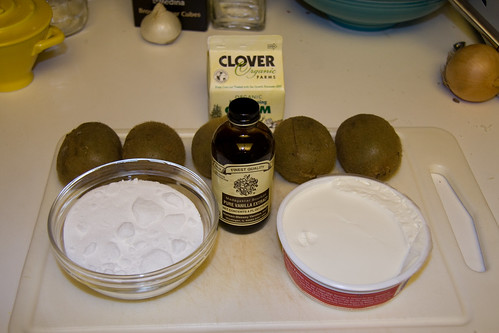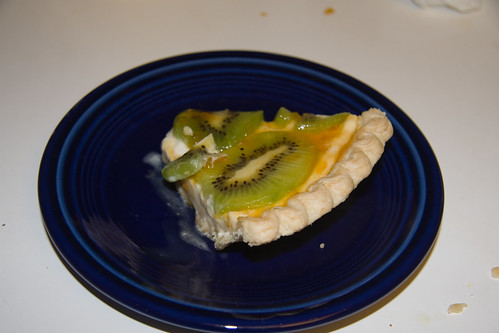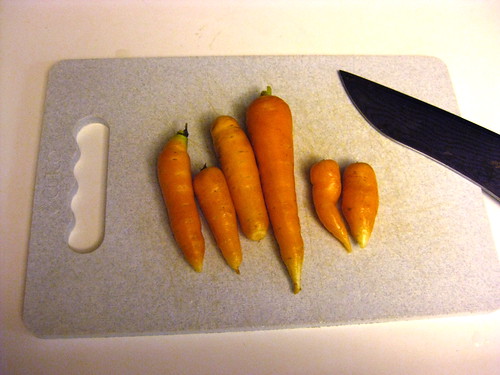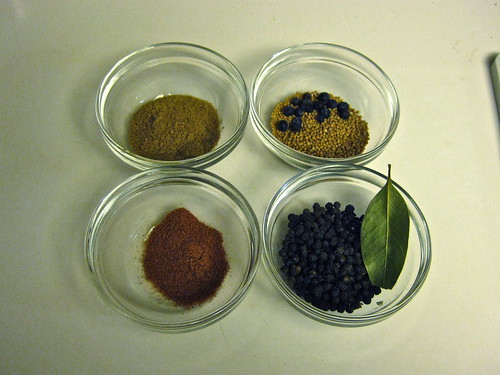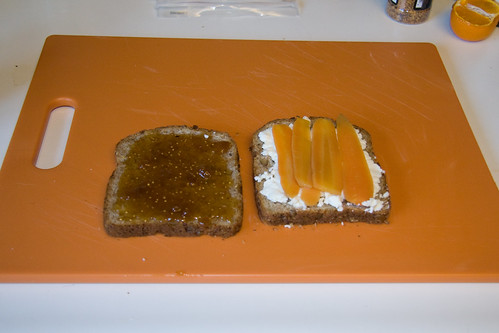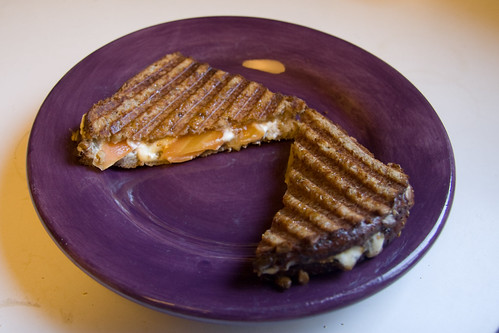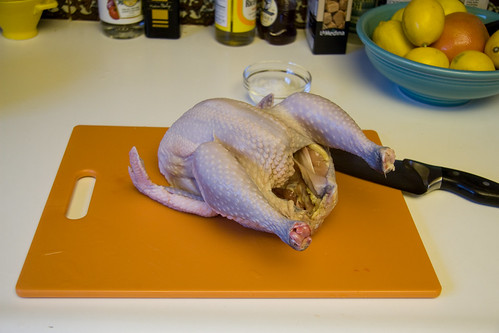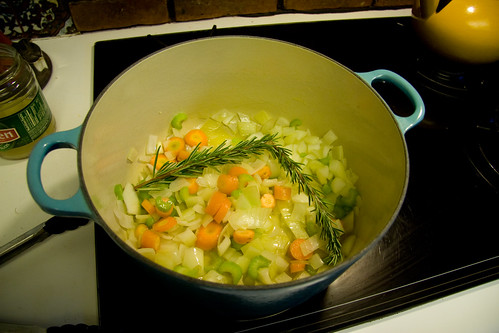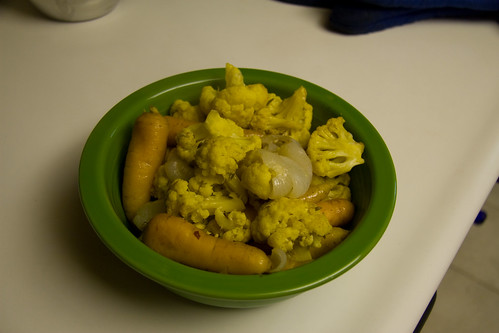Sometimes you pick the meal, sometimes the meal picks you. The latter happened this week, when I came upon a gorgeous haul of Pink Lady apples from Mt. Moriah Farms. I quickly filled a bag with 10 or 12, not certain what we would do with all of them, but confident that a plan would become clear. Placing the apples alongside some leeks we had purchased earlier, I realized that the meal I should make—the meal I had to make—involved that most apple-loving of meats, the humble pork chop.
For the meal I envisioned, I needed thick pork chops. Pork chops thicker than any I had seen in Davis. Fortunately, I had a hunch about where these might be obtained: Corti Brothers in Sacramento, a 64 year old Italian grocery that I had heard tales of for years, but not yet had the pleasure of visiting. Corti Brothers did not disappoint, with nearly 2-inch thick pork chops that were a pound each. We bought three, along with some other treats. A plan was coming together.
Back in the kitchen, I submerged the pork chops in a marinade of Wild Turkey Bourbon, sel gris, fennel seed, crushed red pepper and Pernod. The anise aroma of the Pernod filled the room, conjuring thoughts of a robust and complex cocktail. I figured the perfect opener to our pork meal would be a cocktail that offered a preview of the pork’s flavors—apples, anise, whiskey—an apple Sazerac cocktail.

I am a huge fan of rye whiskies, and, with the recent
rye shortage, have been stocking up like a squirrel preparing for winter. I believe I purchased the last bottle of Wild Turkey Rye in the Sacramento Valley and recently acquired a dusty bottle of Sazerac Rye, a spirit that has been absent from the shelves of both liquor stores and bars for at least nine months. Bravely, like Abraham acting in faith but against judgement, I emptied nearly half of my Sazerac into a carafe over a chopped apple.
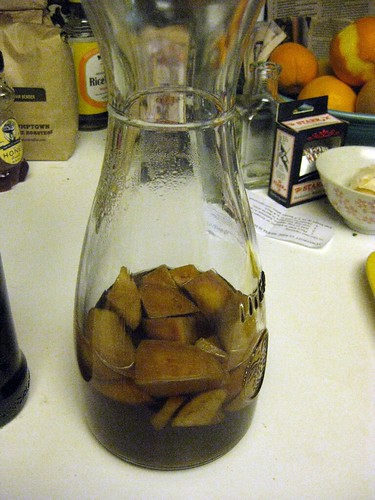
I left the whiskey to infuse overnight, then strained the apples from it. Tasting it, there was a light sweetness, but the apple was barely noticeable, still trapped within the pithy fruit, along with some of my precious rye. I transferred the apples to a measuring cup and muddled them aggressively, then strained this juice back into the whiskey, creating a charming, apple accented rye.
Back to the pork. I chopped the white of two leeks, and sautéed them in some olive oil, then seared each of the pork chops over medium-high heat. Once the pork chops were seared, I stood them on edge, about half an inch apart, and filled the pot with 4 chopped apples. I reduced the heat to low, and added a couple ounces of water, then covered the pot.
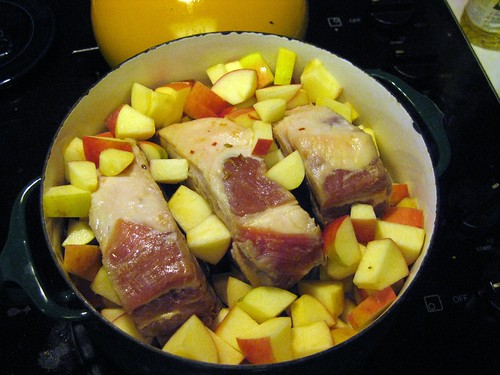
I left the pork to braise for about 2 hours, occasionally rearranging the apple pieces to sit lower in the pot as they softened, and flipping the pork chops once. After removing the pork chops and slicing them, I turned the heat up again, to cook down the apple and leek mixture for a few more minutes. I strained the apple-leek solids out to serve on top of the pork.
While the pork rested, I mixed up a batch apple Sazerac cocktails for our guests, which we served right before the food was brought to the table. The cocktails’ offered a perfect introduction to the pork, which was sweet and fruity with a hint of anisette.
Apple Leek Pork Chops:
3 lbs thick cut pork chops
2 leeks
4 apples
2 tbsp olive oil
For marinade:
1 cup whiskey
1/2 cup sel gris
1 tbsp fennel seed
1 tbsp crushed red pepper
2 oz. Pernod
Combine all marinade ingredients and cover pork for 12-24 hours. Chop leek whites and sautée in olive oil in large pot. Push leeks to side and sear each pork chop on both sides, 2-3 minutes a side. Chop apples into 1/2 inch pieces. Stand pork chops on edge and fill pot with apples. Add a few ounces of water and cover. Cook over low heat for 2 hours, turning pork chops once. Remove pork chops and increase heat. Cook leeks and apples an additional 10 minutes. Serve strained apples and leeks over pork.
Apple Sazerac Cocktail:
2 oz. apple infused rye whiskey*
1 tsp. 2:1 simple syrup**
2 dashes Peychaud’s bitters
Pernod rinse
1 apple wedge
Rinse glass with Pernod and place apple wedge at bottom of glass. In a cocktail shaker, combine rye, simple syrup and bitters. Stir with ice for 15 seconds. Strain over apple and serve.

* Soak chopped apple in 12 oz whiskey for 24 hours. Muddle apples to release juices. Strain into a clean bottle for storage.
** Combine 1/2 cup sugar with 1/4 cup water and cook over low heat until sugar is dissolved and mixture begins to boil. Let cool and refrigerate.
